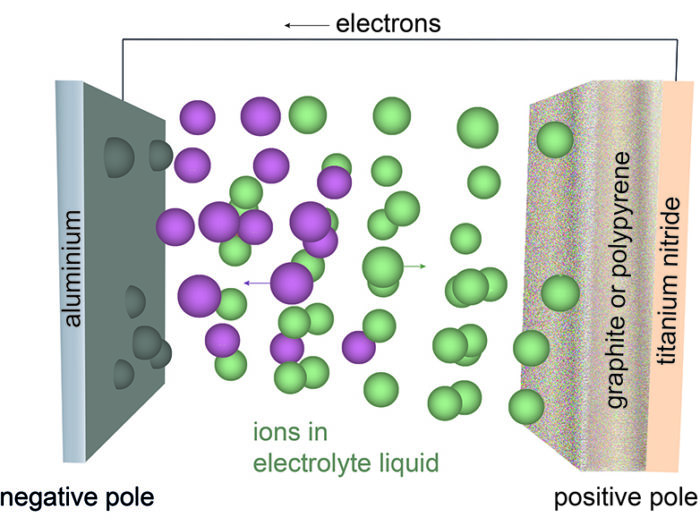Jun
04
2021
 Douglas Adams had a talent for irony. In the Hitchhiker’s Guide series he told the tale of a civilization that tried to improve itself by tricking everyone with a useless job into taking a rocket trip to another world (actually to nowhere). For example, one of the discarded people’s jobs was to clean phones. That’s it – they were a phone cleaner. That civilization later collapsed due to a pandemic started by a phone virus.
Douglas Adams had a talent for irony. In the Hitchhiker’s Guide series he told the tale of a civilization that tried to improve itself by tricking everyone with a useless job into taking a rocket trip to another world (actually to nowhere). For example, one of the discarded people’s jobs was to clean phones. That’s it – they were a phone cleaner. That civilization later collapsed due to a pandemic started by a phone virus.
Part of Adams’ humor was taking reality and then pushing it to the absurd, but that core of reality gave his humor more heft. We may not have phone cleaners, but it does seem that certain jobs are less useful than others. Of course there is a certain amount of subjectivity and value judgements here, but there are some jobs that even the people in them judge to be without purpose. The concept of “bullshit jobs” was proposed by anthropologist David Graeber. In his book Bullshit Jobs, he claims that 20-50% of people are in BS jobs, that this number is increasing over time, that BS jobs are concentrated in certain professions, and that such jobs are psychologically unhealthy. New research finds that he was correct in one out of four of these claims.
While Graeber was bringing attention to a real issue, the psychological effects of being in a job that you yourself feel is of no value, when it came to the magnitude of this issue he did not have hard data. He was largely making inferences. This did lead to mixed reviews of his work at the time, with some reviewers finding his arguments often labored. The new research is an extensive survey of workers in Europe between 2005-2015, with over 30,000 responses. Since by his own definition, a BS job is one that even the person in it feels is worthless, the survey relied upon self-report of whether one’s job had value. Those who responded “rarely or never” to the question, “I have the feeling of doing useful work,” were deemed to have a BS job. The total percentage of people in this category was 4.8%. That’s still about one in 20 people, but a far cry from the as high as 50% Graeber claimed.
Continue Reading »
Jun
03
2021
 Remember the bird flu? Avian influenza (H5N1) was first discovered in birds in 1996, with the first human crossover detected in 1997. Since then it has been discovered in 50 countries and is endemic in six. If you are old enough to remember, there was a bit of a bird flu panic back in the late 90s. Fortunately, so far, those fears have not been realized. But it’s important to remember that the bird flu is still around. Even more important is to remember that there are thousands of potentially pandemic viruses in the world.
Remember the bird flu? Avian influenza (H5N1) was first discovered in birds in 1996, with the first human crossover detected in 1997. Since then it has been discovered in 50 countries and is endemic in six. If you are old enough to remember, there was a bit of a bird flu panic back in the late 90s. Fortunately, so far, those fears have not been realized. But it’s important to remember that the bird flu is still around. Even more important is to remember that there are thousands of potentially pandemic viruses in the world.
Avian influenza adapted to infect birds, and mostly spreads through poultry. Bird to human transmission (zoonotic infection) is rare, and usually occurs in those who work in the poultry industry with long term exposure. The virus is very deadly, with a case fatality rate of about 60%. Worldwide there are 700 reported human cases. However, the virus does not spread easily from human to human. Such transmission is very rare, and is not sustainable. This is why the virus has not caused an outbreak or worse among humans. There are also other strains of flu virus that primarily infect birds, such as H10N5. We now have the first report of an H10N5 infection in a human, in a poultry worker in China. Contact tracing did not reveal any other cases.
For now we have experienced rare bird to human zoonotic transmission of flu strains primarily adapted to birds (colloquially “bird flu”) without any significant or sustainable human to human spread. So what’s the concern? As was originally raised by in the 90s, the concern is that every time a virus jumps from an animal reservoir to a human there is the potential that it will either mutate or will combine with another virus to cause a new strain that is highly contagious to humans. It happens, as we are now experiencing with the SARS-CoV-2 virus. So what do we do about it?
Continue Reading »
Jun
01
2021
 Damn, I hope this one is true. Battery technology is absolutely key to our energy strategy going forward. Right now the cutting edge is lithium ion batteries, which are great, and good enough for our current purposes. They allow for cars with a range of about 350 miles, which is more than enough for most purposes. They are barely, however, energy dense and cost-effective enough to use for home backup power. This is still an expensive option, out of reach for most people. They are fine for small technology, like laptops and cellphones.
Damn, I hope this one is true. Battery technology is absolutely key to our energy strategy going forward. Right now the cutting edge is lithium ion batteries, which are great, and good enough for our current purposes. They allow for cars with a range of about 350 miles, which is more than enough for most purposes. They are barely, however, energy dense and cost-effective enough to use for home backup power. This is still an expensive option, out of reach for most people. They are fine for small technology, like laptops and cellphones.
I have been following battery technology news for years. At first it seems like we are always on the cusp of a major breakthrough. Then you realize that none of these advances are breakthroughs, and the media hype always glosses over or even ignores major limitations. For a useful commercial battery you need to have several features simultaneously, and any one can be a deal-breaker. We need high energy density (energy per volume) and specific energy (energy per mass). It also needs high power density – the ability to absorb and produce energy quickly, enough to run a car. It further needs many charge-discharge cycles, enough for daily charging for years if not decades. It further needs to be stable so that it does not spontaneously catch fire. And finally it needs to be made of reasonably common materials. Not being toxic is a bonus, as is being recyclable.
Lithium-ion batteries fit this fairly well. They do have a tendency to burst into flames if they overheat, but that is improving. They do require some rare-earths and also cobalt in their construction, which will ultimately be limiting.
So far, whenever I read about a leap in battery technology, it turns out that the leap is in only one or a few features, but other features are below the water line. The media report then always says something like – all we have to do is scale up, or figure out this one little problem, and we’re good. But the one little problem is the rub, and most of the time it keeps the breakthrough from being a breakthrough.
Continue Reading »
 Douglas Adams had a talent for irony. In the Hitchhiker’s Guide series he told the tale of a civilization that tried to improve itself by tricking everyone with a useless job into taking a rocket trip to another world (actually to nowhere). For example, one of the discarded people’s jobs was to clean phones. That’s it – they were a phone cleaner. That civilization later collapsed due to a pandemic started by a phone virus.
Douglas Adams had a talent for irony. In the Hitchhiker’s Guide series he told the tale of a civilization that tried to improve itself by tricking everyone with a useless job into taking a rocket trip to another world (actually to nowhere). For example, one of the discarded people’s jobs was to clean phones. That’s it – they were a phone cleaner. That civilization later collapsed due to a pandemic started by a phone virus.
 Remember the bird flu?
Remember the bird flu?  Damn, I hope this one is true. Battery technology is absolutely key to our energy strategy going forward. Right now the cutting edge is lithium ion batteries, which are great, and good enough for our current purposes. They allow for cars with a range of about 350 miles, which is more than enough for most purposes. They are barely, however, energy dense and cost-effective enough to use for home backup power. This is still an expensive option, out of reach for most people. They are fine for small technology, like laptops and cellphones.
Damn, I hope this one is true. Battery technology is absolutely key to our energy strategy going forward. Right now the cutting edge is lithium ion batteries, which are great, and good enough for our current purposes. They allow for cars with a range of about 350 miles, which is more than enough for most purposes. They are barely, however, energy dense and cost-effective enough to use for home backup power. This is still an expensive option, out of reach for most people. They are fine for small technology, like laptops and cellphones.




